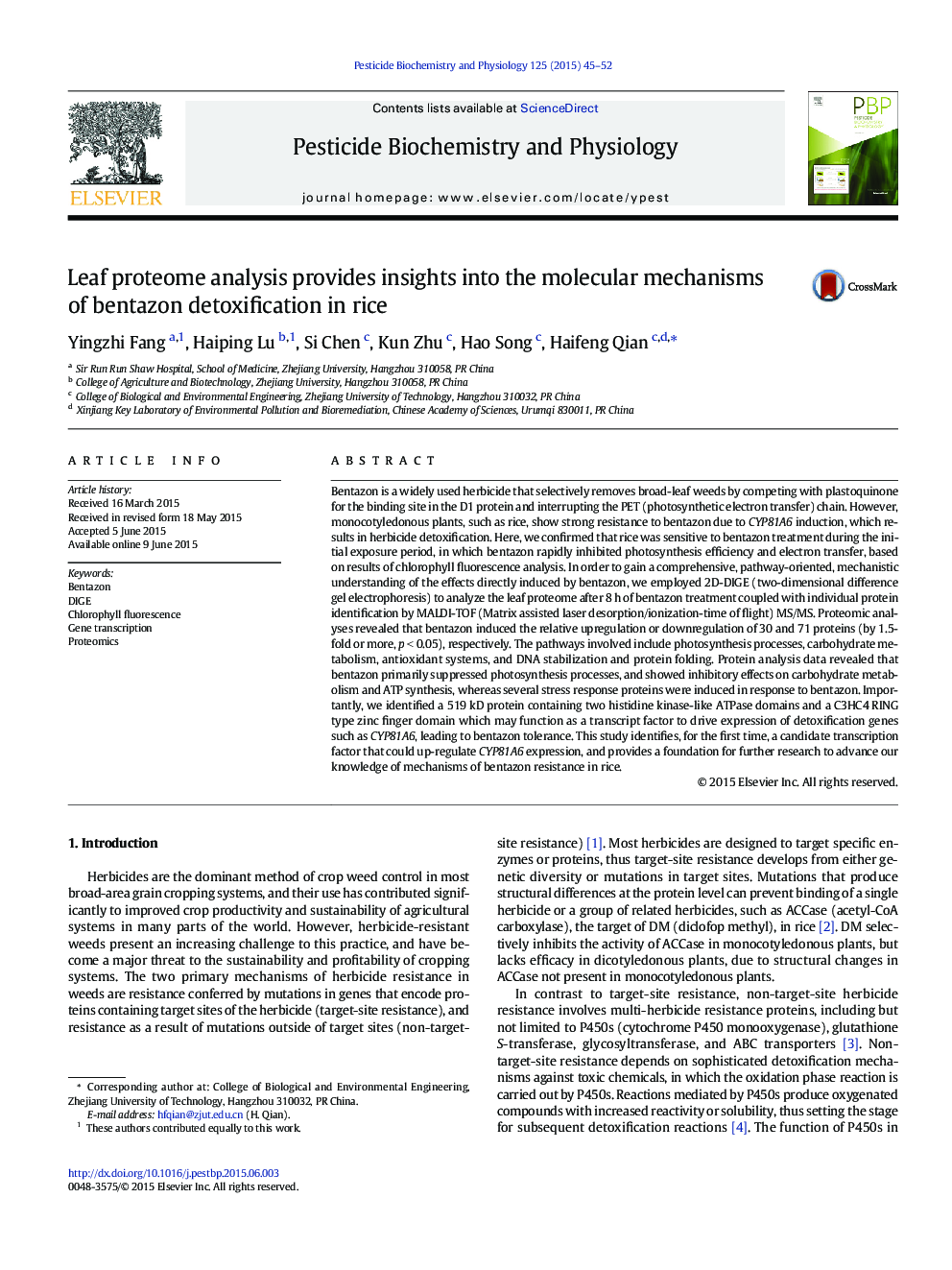| کد مقاله | کد نشریه | سال انتشار | مقاله انگلیسی | نسخه تمام متن |
|---|---|---|---|---|
| 2009004 | 1541774 | 2015 | 8 صفحه PDF | دانلود رایگان |
• Rice is sensitive to bentazon during the initial exposure period.
• 2D-DIGE reveals that bentazon primarily suppressed photosynthesis processes.
• 2D-DIGE reveals that several stress response proteins are induced in response to bentazon.
•
• A 519-kD transcription factor is identified to drive expression of detoxification genes.
Bentazon is a widely used herbicide that selectively removes broad-leaf weeds by competing with plastoquinone for the binding site in the D1 protein and interrupting the PET (photosynthetic electron transfer) chain. However, monocotyledonous plants, such as rice, show strong resistance to bentazon due to CYP81A6 induction, which results in herbicide detoxification. Here, we confirmed that rice was sensitive to bentazon treatment during the initial exposure period, in which bentazon rapidly inhibited photosynthesis efficiency and electron transfer, based on results of chlorophyll fluorescence analysis. In order to gain a comprehensive, pathway-oriented, mechanistic understanding of the effects directly induced by bentazon, we employed 2D-DIGE (two-dimensional difference gel electrophoresis) to analyze the leaf proteome after 8 h of bentazon treatment coupled with individual protein identification by MALDI-TOF (Matrix assisted laser desorption/ionization-time of flight) MS/MS. Proteomic analyses revealed that bentazon induced the relative upregulation or downregulation of 30 and 71 proteins (by 1.5-fold or more, p < 0.05), respectively. The pathways involved include photosynthesis processes, carbohydrate metabolism, antioxidant systems, and DNA stabilization and protein folding. Protein analysis data revealed that bentazon primarily suppressed photosynthesis processes, and showed inhibitory effects on carbohydrate metabolism and ATP synthesis, whereas several stress response proteins were induced in response to bentazon. Importantly, we identified a 519 kD protein containing two histidine kinase-like ATPase domains and a C3HC4 RING type zinc finger domain which may function as a transcript factor to drive expression of detoxification genes such as CYP81A6, leading to bentazon tolerance. This study identifies, for the first time, a candidate transcription factor that could up-regulate CYP81A6 expression, and provides a foundation for further research to advance our knowledge of mechanisms of bentazon resistance in rice.
Figure optionsDownload as PowerPoint slide
Journal: Pesticide Biochemistry and Physiology - Volume 125, November 2015, Pages 45–52
